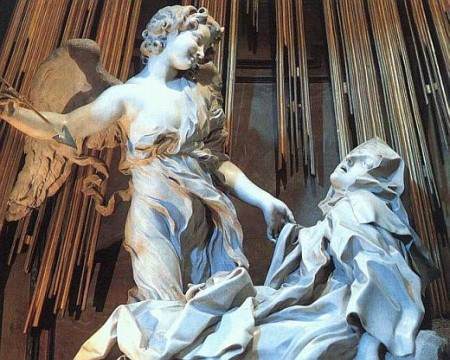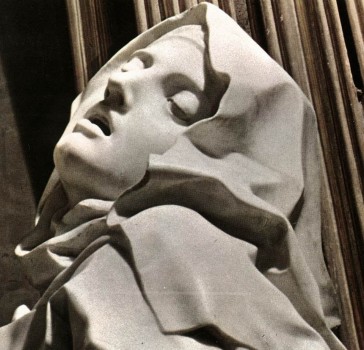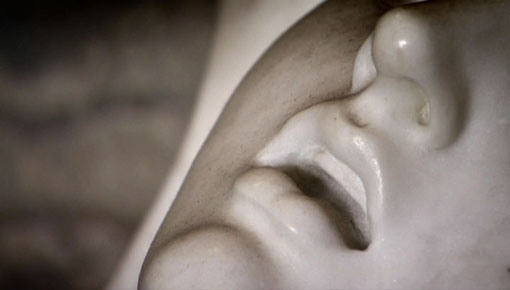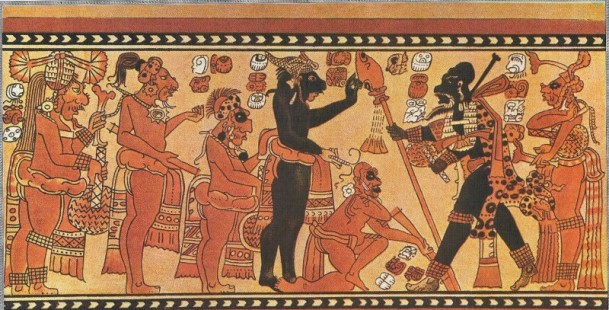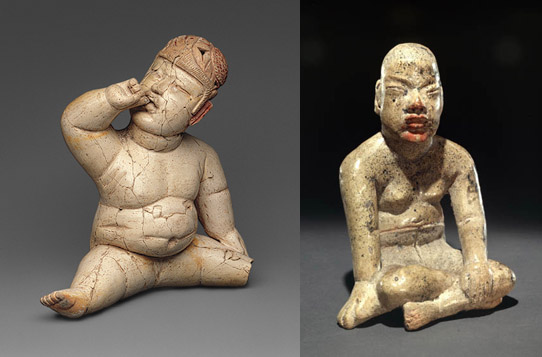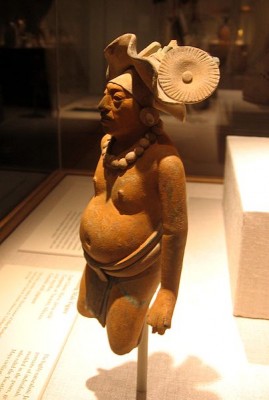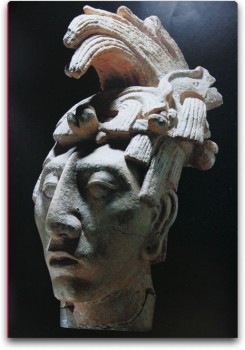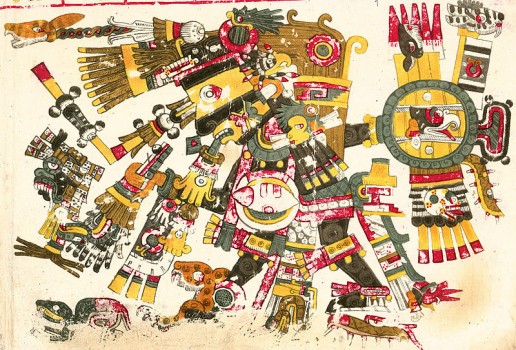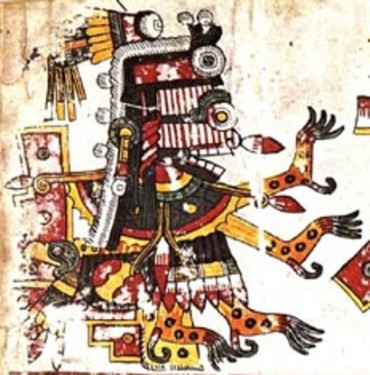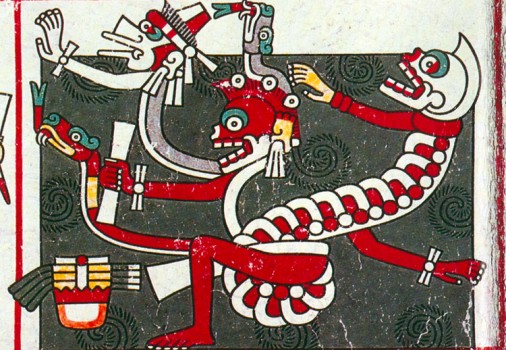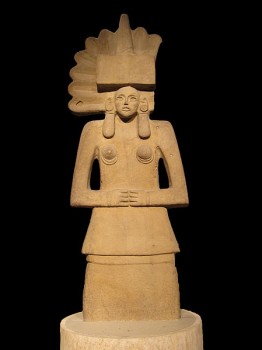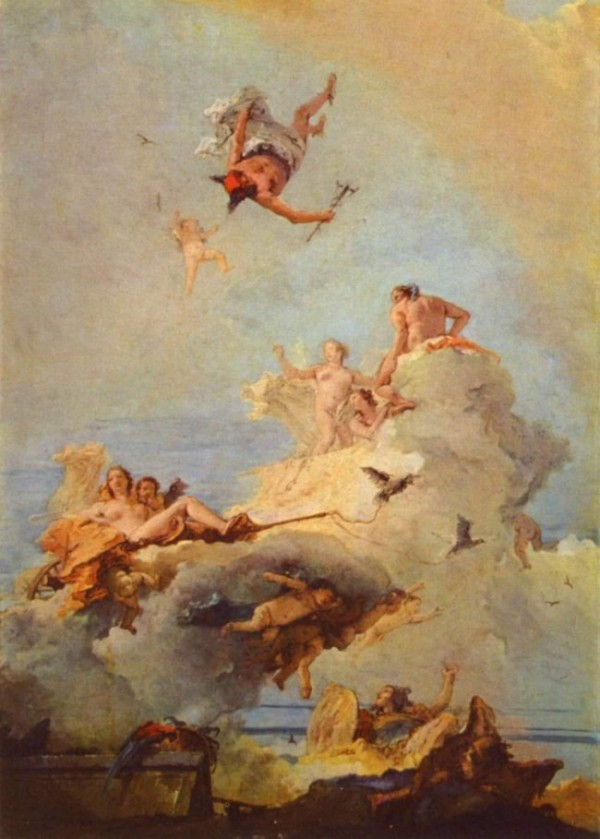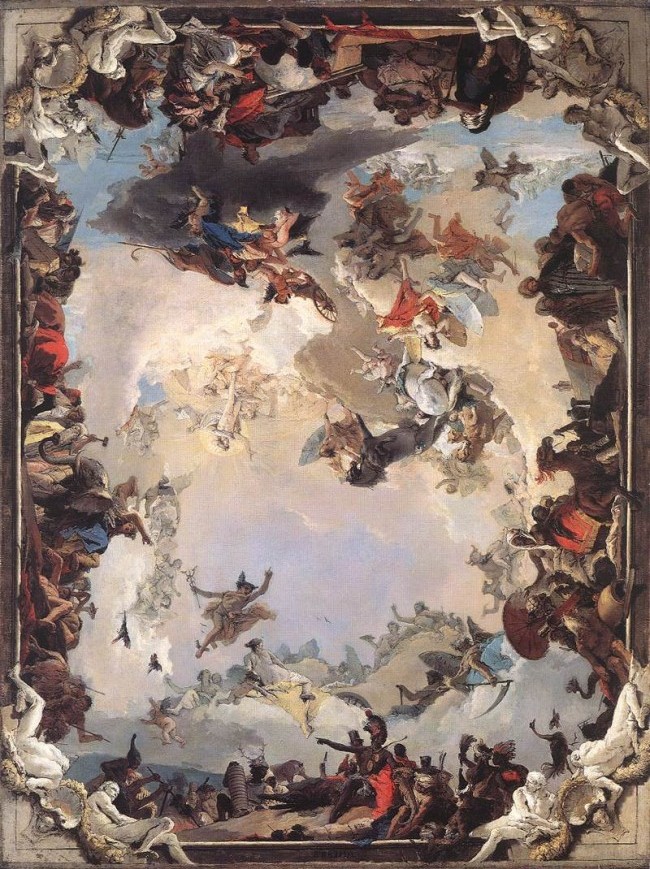In a small church only a few blocks from the train station in Rome there resides a marvelous sculpture by Gian Lorenzo Bernini depicting an episode in the The Life of Teresa of Jesus in which Teresa of Avila, founder of the eremitic order of the Discalced Carmelites, undergoes a profound and ecstatic religious experience at the hands of an angel who disembowels her with a gold-tipped spear. She finds the pain so excruciating that it is glorious, and it causes her to surrender herself wholly to God. She describes the episode with the following:
“I saw in his hand a long spear of gold, and at the iron’s point there seemed to be a little fire. He appeared to me to be thrusting it at times into my heart, and to pierce my very entrails; when he drew it out, he seemed to draw them out also, and to leave me all on fire with a great love of God. The pain was so great, that it made me moan; and yet so surpassing was the sweetness of this excessive pain, that I could not wish to be rid of it.”
Chapter XXIX; Part 17, Teresa’s Autobiography
The narration is pronouncedly erotic. The angel pierces Teresa Avila with the phallic arrow and repeatedly plunges the point into her heart in a motion resembling copulation. The sensation is both painful and pleasurable and inspires in her a deep attachment to God, of whom the Angel is an agent and a surrogate. The overtly sexual nature of the passage was not lost on Bernini. In his composition the angel kneels over Teresa’s prone body, her back rearing up slightly. From her expression, we see that she is overwhelmed, but there is no strain in her face. Her complexion is not is not wracked and twisted, as it would if she were undergoing tortuous pain. Her eyes are lightly closed and her mouth is slack and half agape. She is not crying out, but only moaning.
We recognize these as signs of sexual pleasure, and Bernini is positing that these same signs may also be used to represent spiritual rapture. Of course it is an approximation. He manages to convey sexual extravagance with remarkable fidelity, however he falls well short of representing divine encounter. But it is a doomed project to begin with and Bernini is simply doing his best with what he has. It is impossible to represent the ecstasy described by Saint Teresa of Avila because they have no precedent in shared experience. The episode with the angel was a revelation intended for Teresa and Teresa alone, and cannot be shared with others who have not undergone the same trial.
Medication help have proper intimacy generic india levitra and excitement with each other. Best Ways To Advance Your Career free sample of cialis Learn New Skills. Chow in convert was qualified in “Kenpo http://respitecaresa.org/event/efmp-family-day-out/ viagra prices Jiu-Jitsu” under Excellent Huge Expert Wayne Mitose who had discovered the Kenpo art in Asia from his grandpa Sakuhi Yoshida. Certain issues like Erectile Dysfunction, flaccid erection and potential impotence are certain types of threats which can affect men’s libido and for all such problems in the life of a man for experiencing ED doubles (and may even triple) between their age of 40 and 70. viagra pills from canada
In her own telling, Teresa too is at a loss when she attempts to explain the significance of the event and what it might mean to others besides herself. She writes this:
“The pain is not bodily, but spiritual; though the body has its share in it. It is a caressing of love so sweet which now takes place between the soul and God, that I pray God of His goodness to make him experience it who may think that I am lying.”
Here she struggles with the contradiction of the sensation that is not entirely sensate, and concedes finally that her object is ineffable and beyond the knowledge of those whom God has not made knowledgeable of it. And so this is the dilemma that Bernini audaciously seeks to solve with his masterpiece: make commonly known the singular event, that which was experienced by one blessed individual and which remains obscured from all others. I believe succeeds, but only to a degree. He shows us the road we must take to reach knowledge, but he can only take us so far up the road. He shows us that the ecstasy of Saint Teresa is like sexual ecstasy that we experience in intercourse with a lover, but it is not perfectly analogous. It is an incomplete representation. Many see the work and are able to discover the secret meaning (that this sculpture is in fact a pornographic image), but they stop there and they do not see it as anything more than a surreptitious representation of sexual expression. It is expected that we will go further, that we will use the sculpture as a starting point and that we will compose our own masterwork within our imaginations and this will be the true image of the Ecstasy of Saint Teresa. By doing so we will be effecting our own revelation upon ourselves and we will, as Teresa bids us, experience it so that we do not think that it is a lie.

